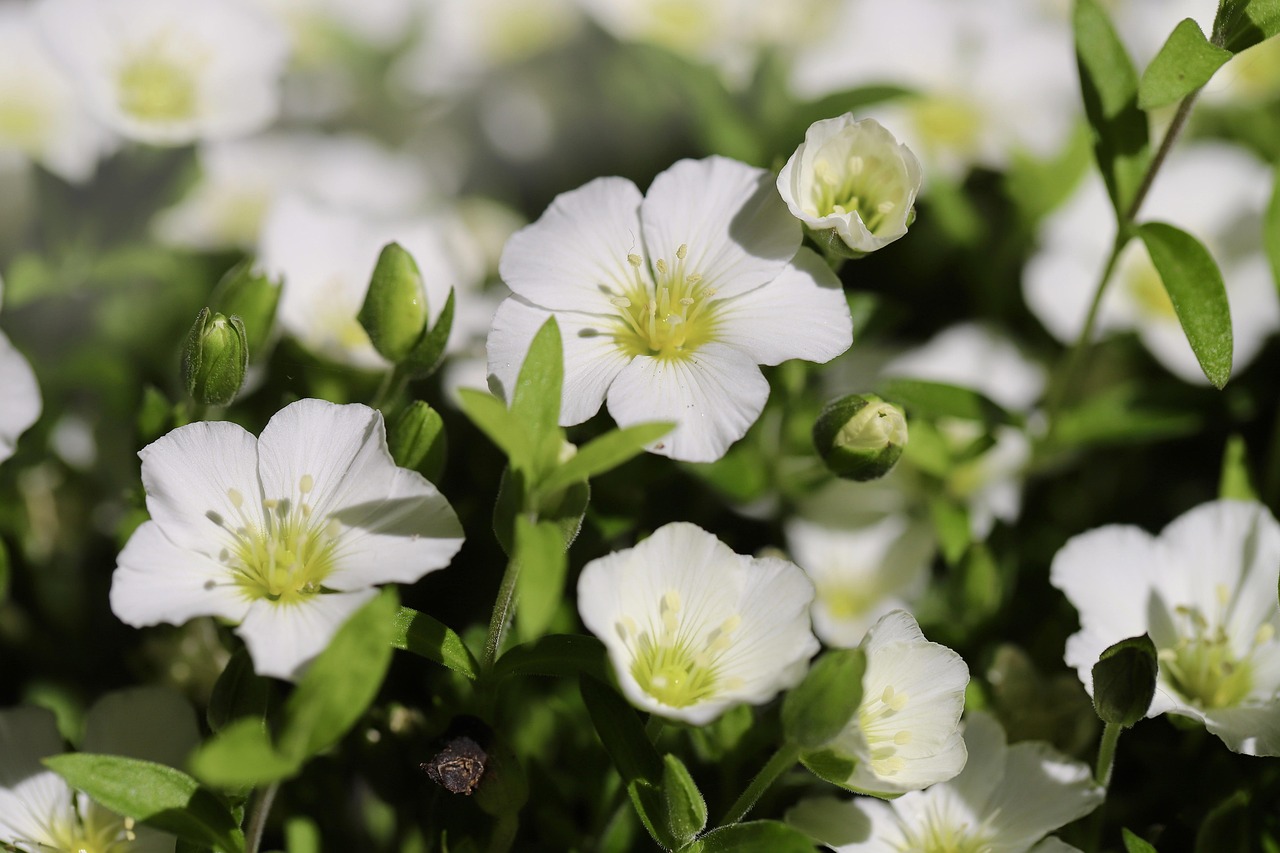
Chickweed
Stellaria media
Basic Information
🌿 Family: Caryophyllaceae🗺️ Zone: 4-9
Other Names:
- Common Chickweed
- Chickenwort
- Craches
- Maruns
- Winterweed
🌡️ Ideal Temperature : 53°F (12°C)°F – 68°F (20°C)°F
🔥 Heat Tolerance: Up to 95°F (35°C)°F
❄️ Cold Tolerance: Down to 32°F (0°C)°F
🌱 Type: Annual
Layers
- Ground
Description
Chickweed (*Stellaria media*) is a low-growing annual herb native to Eurasia but now widespread globally. It typically forms dense mats up to 40 centimeters (16 inches) in length. The plant has slender, weak stems with a single line of fine hairs and small, opposite, oval leaves that are smooth and light green. Its small, white, star-shaped flowers, about 5 millimeters (0.2 inches) in diameter, have five deeply lobed petals, giving the appearance of ten petals. Chickweed thrives in moist, fertile, and nitrogen-rich soils, often found in lawns, gardens, and shaded areas.
✂️🫘 **Methods to Propagate:**
Chickweed propagates primarily through seeds, which can remain viable in the soil for up to ten years. It can produce seeds five weeks after germination and will continue to produce seeds for months. Each plant can produce over 800 seeds. Seeds germinate in autumn and spring, favoring cool, moist conditions. To cultivate, scatter seeds over prepared soil and lightly press them in without covering, as they require light for germination.
🌞💧 **Sun and Water Requirements:**
Chickweed prefers partial shade but can tolerate full sun, especially in cooler climates. It thrives in moist, well-drained soils rich in organic matter. Regular watering is essential to maintain soil moisture, particularly during dry periods, to prevent wilting.
🧑🌾👩🌾 **When to Harvest:**
Harvest young, tender shoots and leaves before the plant flowers for the best flavor and nutritional value. Chickweed can be harvested multiple times throughout its growing season, as it regenerates quickly after cutting.
Purpose
- **Edible:** Chickweed leaves and stems are edible and can be consumed raw in salads or cooked like spinach. They have a mild, slightly sweet flavor and are rich in vitamins and minerals.
- **Medicinal:** Traditionally used in folk medicine, chickweed has been applied topically to soothe itchy skin conditions and minor wounds. It is also consumed as a remedy for pulmonary diseases and rheumatic pains, though scientific evidence supporting these uses is limited.
- **Ground Cover:** Its dense, mat-forming growth habit makes chickweed effective as a ground cover to suppress weeds and protect soil.
- **Wildlife Attractor:** Chickweed serves as a food source for various birds and insects, supporting local ecosystems.